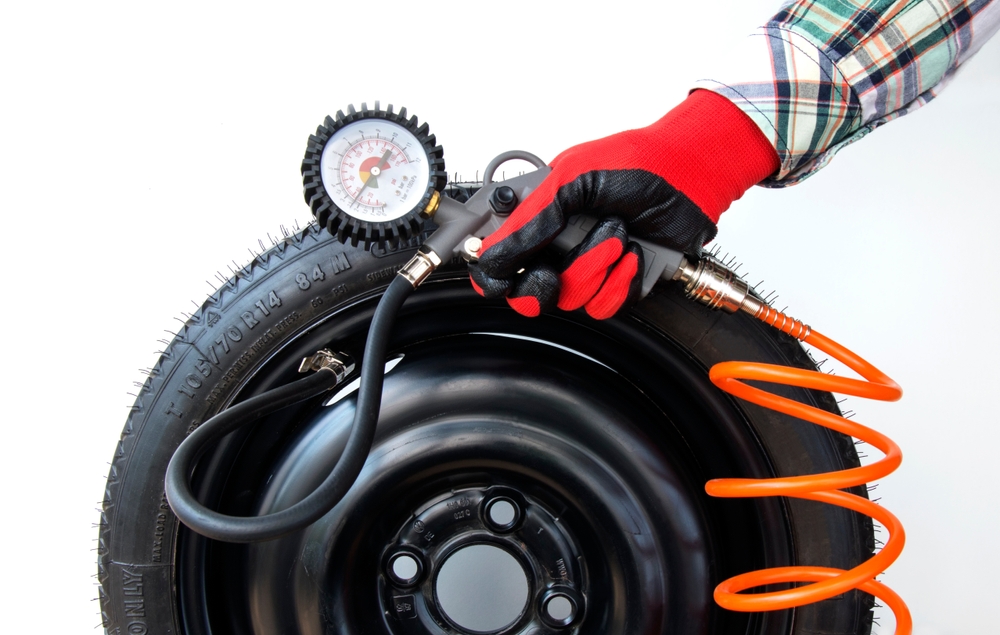Your Complete Tyre Pressure Guide | Morley Tyre Centre Perth

Have you ever wondered about your car’s tyre pressures? Usually, not many people are aware that they should periodically check the air pressure in their tyres. This is very important if you want to maximize your vehicle’s fuel efficiency and promote good tyre life.
Car tyres are designed to hold a specific amount of air for their durability and overall performance. Under-inflated tyres can have many negative effects on your car’s safety and performance, but overinflated tyres can be just as hazardous.
There are a few things you should do before checking your tyre pressures, which we will explain below:
Begin with Cold Tyres
When checking your tyre pressures, your tyres should be cold. This is because hot or warm tyres that have recently been driven may give inaccurate pressure readings. A car’s tyres are considered cold when the vehicle has been driven for 1.6km or less, or the car has been parked for three hours or more.
Check the Pressures Advised by the Manufacturer
Check the recommended tyre pressures for your vehicle. This is a unit of pressure expressed in pounds of force per square inch of area (PSI), which stands for Pounds per Square Inch. The recommended tyre pressures can be found in the manufacturer’s manual or on the driver’s side door. Consult your vehicle manufacturer or a qualified tyre professional if you cannot find this information.
A tip to avoid getting confused while checking tyre pressures is to write down the recommended pressure for your tyres. This information can be found in the owner’s manual, which you can also keep handy when reading and adjusting the pressures to ensure accuracy.
Use your Gauge to Check Tyre Pressure
A pressure gauge is a device used to measure the pressure of the tyres on any vehicle that uses inflated tyres. Check the pressure with an accurate air pressure gauge and keep it at the level suggested on the vehicle tyre placard or in the owner’s manual.
When checking your tyre pressure, take the following steps:
- Unscrew the dust cap to remove it.
- Insert the pressure gauge into the valve stem to determine the current pressures in your tyres.
- To establish whether your tyres need to be inflated (or deflated), compare the readings to the recommended tyre pressure.
- If you’re not fixing your tyre pressure right away, replace the dust cap by screwing it on finger tight for now.
Recommended Tyre Pressure for your Tyres
The recommended tyre pressure is the pressure established by the manufacturer of your car as the optimal air pressure for your tyres. Running your tyres at the correct pressure is important because it keeps you safe, cuts down your fuel bill and makes your tyres last longer.
Each vehicle has its own specifications for tyre pressure, but most fall between 28 and 36 PSI (pounds per square inch) however this could be greater especially if you carry extra load in your vehicle or run on larger diameter wheels (there is usually another pressure recommendation for these or the placard).
Maximum Tyre Pressure:
If you have noticed, tyres have their maximum pressure written on the sidewalls. Almost all tyres have words like “Max pressure 35. PSI” written on them. This basically tells us the maximum cold pressure the tyres need, in order to carry the car’s maximum load. “Cold pressure” basically means, filling up the tyres when they are cold. The ideal time to fill up the tyres is in the morning or after giving the tyres sufficient time to cool down after being driven. The maximum tyre pressure is usually between 30 and 32 PSI.
What Happens If You Inflate Your Tires to the Max PSI?
- The handling characteristics change: Cars that have their tyres inflated to the max PSI usually have the risk of losing control around the corners. A quick corner might result in the back end of the car sliding out.
- The life of the tires decreases: When you inflate your car’s tyres too much, the rubber at the top of the tyre begins to quickly wear out. Traction is also reduced and there is a greater risk of the tyres blowing out.
Benefits of Having Correct Tyre Pressures
You can ensure that your tyres will last longer if you keep them inflated to the right pressures. Also, having the correct tyre pressures improves fuel efficiency, enhances road safety and reduces the risk of tyre failure.
- Improved Fuel Economy: The surface of an underinflated tyre is in greater contact with the road, creating more friction and rolling resistance. As a result, underinflated tyres will use more fuel to maintain the same speed, which means more trips to the fuel station and less money in your pocket. Underinflated tyres will also get hot. Very hot. In fact, it’s this excess heat that is the primary cause of tyre blowouts, a sudden and potentially dangerous situation, especially if a blowout occurs at highway speeds. Without a doubt, maintaining the proper tyre pressure will save you money. Your fuel consumption can easily increase by up to 5% with just a 9% drop in your car’s tyre pressures.
- Extends the lifespan of your tyres: Tyres can be expensive and we frequently find ourselves in need of new tyres when we least expect them and are unable to pay for them. Maintaining your tyres at the correct pressures as recommended by the manufacturer will help to ensure the full duration of your tyres’ life. Your owner’s manual or the placard on your car will have the pressures listed. Usually, you can find this in the engine compartment or the door jamb of the car.
- Reduces the risk of tyre failure: Under or overinflated tyres can create a significant safety risk to passengers. If they are underinflated, there is a great possibility of rolling the tyre off the rim. Underinflated tyres could affect handling and braking as they won’t be responsive when cornering with a longer braking distance. On the other hand, tyres that are overinflated are also a serious risk. Overinflated tyres will wear the centre of the tyre much more rapidly and your tyres will be more susceptible to blowouts from potholes, curbs, debris on the road and so on. Blowouts can be extremely dangerous, especially when driving on the highway. The life of the tyre will be reduced by overinflation at a rate of 45% faster when it is 30% overinflated.
Conclusion
Maintaining the correct tyre pressure is essential for your vehicle’s safety, fuel economy and tyre longevity. Whether you’re commuting daily or preparing for a long road trip, regularly checking and adjusting your tyre pressure ensures a smoother, safer ride.
At Morley Tyre Centre, our experienced team is here to help you stay road-ready with professional wheel balancing, alignment and tyre services. Visit us today for expert advice and dependable service you can trust.
